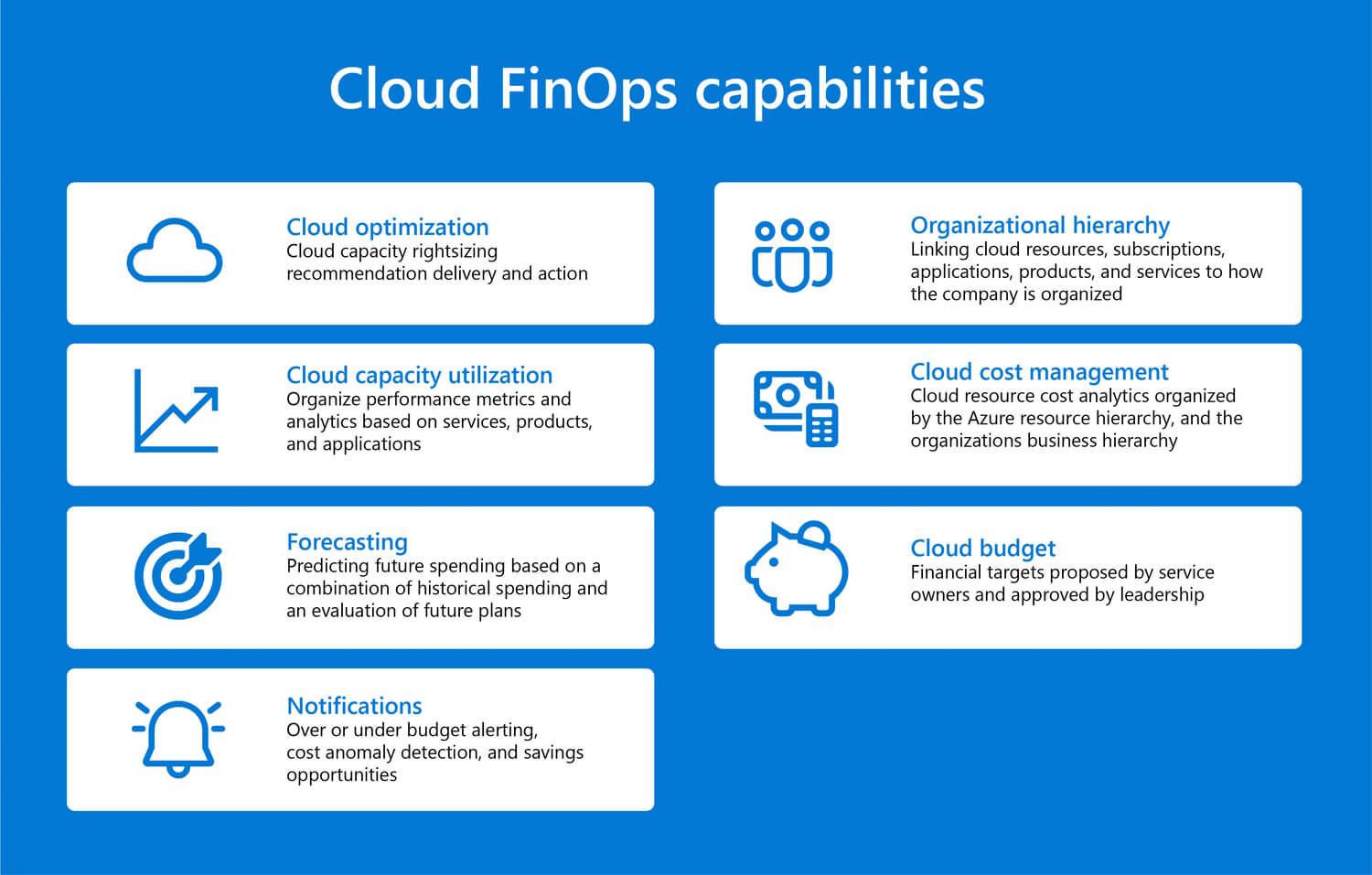 Budget forecasting is a crucial discipline across any business process. With a large-scale consumable resource like Microsoft Azure, accurate budgeting can lead to savings in the millions.
Budget forecasting is a crucial discipline across any business process. With a large-scale consumable resource like Microsoft Azure, accurate budgeting can lead to savings in the millions.
To improve Microsoft Azure spend forecasting for our internal engineering teams in Microsoft Digital Employee Experience (MDEE), our FinOps team developed a dashboard that helps us provide our colleagues with guidance and course corrections. The tool highlights when spend and forecast don’t match, breaks down the data, and identifies opportunities for right-sizing and optimization.
By providing greater visibility and forecasting accuracy, the cloud FinOps dashboard improves efficiency and generates substantial budget savings, empowering our engineers to do more with less.
[See how we’re doing more with less internally at Microsoft with Microsoft Azure. Learn about Microsoft’s cloud-centric architecture transformation. Read more about moving Microsoft’s financial reporting processes to Microsoft Azure. Explore creating a modern data governance strategy to accelerate digital transformation at Microsoft.]
Prioritizing FinOps accuracy

Teams throughout MDEE leverage Microsoft Azure for many of their day-to-day tasks, and just like any budget expenditure, it’s important that their forecasting is as accurate as possible.
The FinOps Foundation identifies the maturity of an organization’s budgeting as the degree of variance between a forecasted budget and the actual spend, measured as a plus-or-minus percentage difference. Regardless of whether a spend is over or under a forecasted budget, the smaller the variance, the better a team is at forecasting its spend and the greater their FinOps maturity. Greater maturity leads to more efficiency and better budget allocation.
As members of the FinOps Foundation, we’re working to reduce our forecasting variance. The goal is to land in the top tier of FinOps maturity with a forecasting variance of less than 5 percent. Our FinOps team saw an opportunity to contribute to our overall maturity by tackling Microsoft Azure spend.
“We’re trying to solve problems that relate to these teams’ budget, forecasting, and optimization,” says Trey Morgan, principal program manager of MDEE Cloud FinOps. “Our job is either to show them solutions or make the data they need available so they can solve these issues themselves.”
Delivering on those goals demands tracking, transparency, and clear communication.
Visibility drives maturity
We combine several tools to display information in one user-friendly dashboard. On the back end, we leverage our internal source of truth for the organizational hierarchy and our budgeting and forecasting tools. We query our Microsoft Azure spend data and Microsoft Power BI provides the user interface. The result is a dynamic, easy-to-navigate dashboard that provides deep insights with just a few clicks.
Our cloud dashboard doesn’t just provide an all-up view of overall Microsoft Azure spend. FinOps users can drill down into different business hierarchies, then dive deeper into granular Azure spend on individual teams.
Most importantly, the tool tracks a team’s forecasting commitments alongside actual spend, predicting their trajectory for the rest of the fiscal year and displaying variance over or under their target.
When variance issues emerge, they get a notification and are asked to address their cost or forecast problem. Our dashboard even provides automated recommendations for cost-saving opportunities.
There’s an explanation behind any forecasting inaccuracy, some interesting story behind each of these services and the changes happening within them. This tool elevates those scenarios more effectively, and helps us dig deeper into why they’re happening.
—Paul Daly, principal software engineering manager, US Security and Compliance, Microsoft Digital Employee Experience
What we’re trying to do is give them a one stop shop for budget and forecast details, and cost optimization recommendations all within one dashboard. These capabilities come together to help our internal customers track their variance and reduce the likelihood that unexpected cloud costs will occur.

“What we’re advocating for is, if you say you’re going to spend a specific amount of money, spend the money, and if you’re not spending what you thought, we want to give you information about why it’s happening,” Morgan says. “It’s a way to help teams meet the expectations they’ve set for themselves and agreed on with leadership.”
Telling the data story
Having access to Microsoft Azure spend information and partnering closely with engineering teams gives us insights into usage patterns as they emerge. The circumstances that drive forecasting variance aren’t always in a team’s control, but by understanding what leads to these patterns, FinOps tools can alert and advise their colleagues effectively.
“There’s an explanation behind any forecasting inaccuracy, some interesting story behind each of these services and the changes happening within them,” says Paul Daly, principal software engineering manager for US Security and Compliance within MDEE. “This tool elevates those scenarios more effectively and helps us dig deeper into why they’re happening.”
Understanding those stories gets results. Since launching the dashboard in October 2022, we’ve been using it to track Microsoft Azure budget forecasting and spend across 200 teams. In that time, we’ve driven more than $1 million in Azure savings by flagging budget issues and working with teams to right-size their spends.
At the moment, only our FinOps team and a few early adopters have direct access to the cloud dashboard. Those key team members leverage insights from the dashboard to support colleagues in driving accuracy and efficiency.
A lot goes into forecasting accuracy, and it’s a really good high level indicator of whether a team, a group, or an organization is healthy if they’re able to do what they say they’re going to do.”
—Heather Pfluger, general manager, Infrastructure and Engineering Services, MDEE

In the future, Microsoft Azure admins throughout our larger organization will be able to access the cloud FinOps dashboard directly and receive automated notifications when discrepancies arise. That will free FinOps professionals to focus on gathering information, tracking wider patterns, and telling even larger data stories.
The bottom line of better forecasting is budget savings. But it also speaks to the growing data discipline within Microsoft as a whole.
“As a company, we do a good job of identifying these savings opportunities, putting them in a database and then distributing that data to our engineering teams,” says Heather Pfluger, general manager of Infrastructure and Engineering Services. “A lot goes into forecasting accuracy, and it’s a really good high-level indicator of whether a team, a group, or an organization is healthy if they’re able to do what they say they’re going to do.”
Greater FinOps maturity is helping our technical teams make the most of their budgets by uncovering stories in their data. As a result, we’re discovering new ways to do more with less.

- Tracking is the key to FinOps maturity, so make sure you have the technology in place to make it possible.
- Pay attention to the look and feel of your dashboard to provide familiarity and encourage use.
- Break the desire to come in under budget. Accuracy is more valuable than underspend.
- Don’t leave teams to fend for themselves. Make your FinOps team genuine advisors and partners.
- Don’t aim for one-size-fits-all recommendations and include hard numbers in any recommendation.

- See how we’re doing more with less internally at Microsoft with Microsoft Azure.
- Learn about Microsoft’s cloud-centric architecture transformation.
- Read more about moving Microsoft’s financial reporting processes to Microsoft Azure.
- Explore creating a modern data governance strategy to accelerate digital transformation at Microsoft.
Tags: cloud FinOps, digital transformation, Finance, Microsoft Azure








